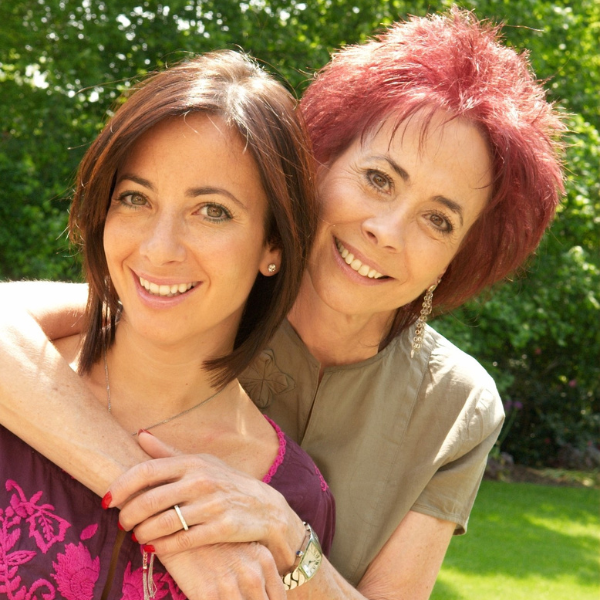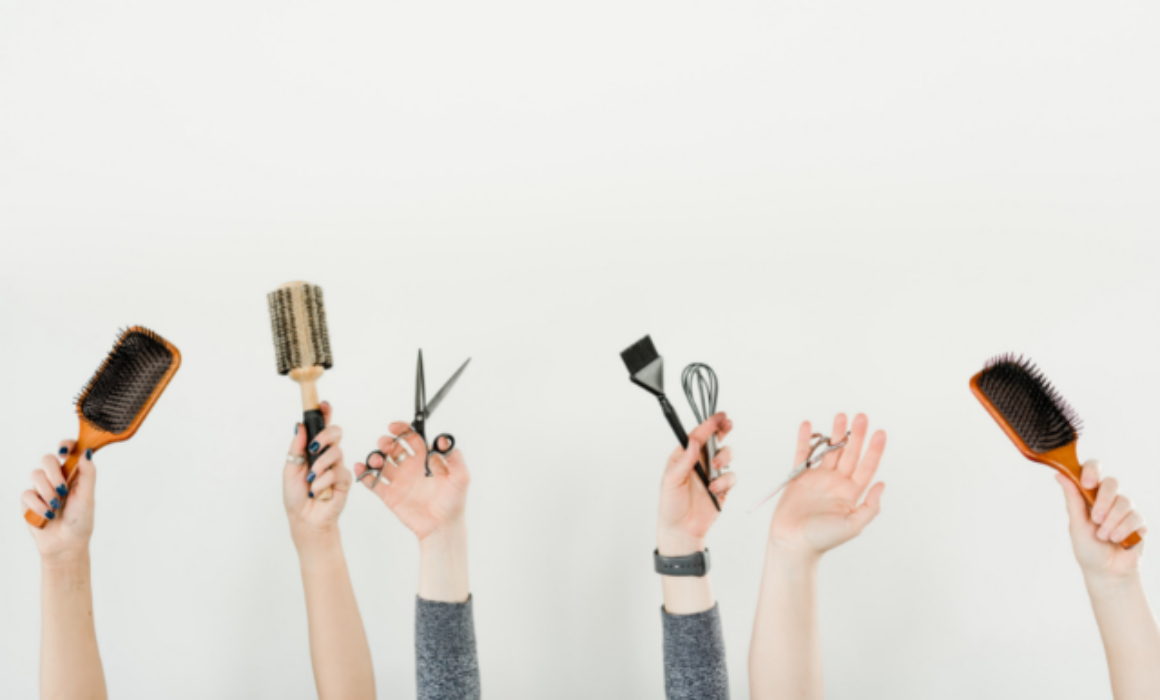
Let's Nail Breast Cancer - Help support our urgent appeal on the 19th - 20th May 2024
Let's Nail Breast Cancer - Help support our urgent appeal on the 19th - 20th May 2024
Let's Nail Breast Cancer - Help support our urgent appeal on the 19th - 20th May 2024
Let's Nail Breast Cancer - Help support our urgent appeal on the 19th - 20th May 2024
Let's Nail Breast Cancer - Help support our urgent appeal on the 19th - 20th May 2024
Here are our top ten things to know about hair loss, followed by a list of links to some helpful information about hair loss, wigs and cold capping. We’ve put this together from our perspective as patients and we encourage you to talk to your medical team about your personal situation.
The big question for a lot of people embarking on breast cancer chemotherapy is “will my hair fall out?”. And (depending upon your chemo regime) the answer is often “probably”. Hair loss can be the most distressing thing for some people going through breast cancer. Not only do we have to deal with all the emotional stress and worry that cancer brings; endure the physical trauma of chemotherapy and radiotherapy; now you are telling me that I have to do all of this with a bald head, no eyelashes and no eyebrows?
Although it may seem impossible, do try to come to terms with the fact that your hair will fall out. There are lots of ways to look good during treatment despite the hair loss. And remember that it will grow back.
1. WHEN AND HOW
The timing of the hair falling out depends upon the chemo drugs you are having. Your hair falls out by thinning first. You notice more than usual in your brush or on the floor of the shower. Quite soon after that, it starts to come out even when you just run your fingers through your hair – it comes out in handfuls. This is the most distressing part. And it is not just the hair on your head which falls out. It is all over your body. Yes, everywhere.
2. LONG, SHORT OR SHAVED?
As soon as your hair starts to fall out is the time to make your decision – leave it to fall out, cut it shorter or shave it? You can leave it to fall out but you risk having bald patches showing up. You can cut it short which will temporarily camouflage the thinning hair. Or you can bite the bullet and get it shaved. There are salons which provide very kind, discreet services for people going through chemo: they may have a private area where you can go to have your head shaved (phone up your local salons to ask if they’d do this for you). If you do this, remember to take a hat or scarf with you for when you go home. Some people shave their hair off with friends and family at home. Or they do it themselves alone. If you do it yourself be very careful you don’t cut yourself because you don’t want to get an infection (remember your low immunity).
3. SCALP CARE
When your hair falls out your scalp can feel tingly and itchy. There are waves of this itchiness. All you want to do it rub and scratch your head. And as you rub and scratch your head, more hair falls out. And even after having your head shaved (if you chose that route) you will have some stubble on your head which will fall out, and as it does you will still get these irritating waves of itchy, tingly, prickly, tickly, crawling ants over your scalp. To help with this:
- Shampoo your scalp with a very gentle shampoo (consider ph neutral, paraben free or organic shampoos).
- Use a very natural oil or moisturiser on your scalp – olive oil or something like aveeno moisturiser.
- Cover your head whilst outside so keep the sun off your skin and also in cold weather to protect it.
- Wear a soft scarf or hat.
4. HAIRCARE
Special hair care is necessary in the days before your hair falls out, during the thinning stage, and throughout treatment if you are using the cold cap. Advice includes:
- Use gentle shampoo and conditioner – ph neutral are good.
- Don’t wash it every day.
- Don’t use harsh styling products like mousse, gel and hairspray.
- Don’t rub your hair with a towel: blot it dry.
- Don’t use a hairdryer, straighteners or heated curlers.
- Don’t have your hair treated or coloured.
5. COLD CAP?
Chemotherapy-induced hair loss is widely recognised as the most feared side effect associated with cancer treatment. It is often the first question that people ask when they learn they will require chemotherapy, “Will I lose my hair?” Many patients rank hair loss as the most feared and traumatic side effect of their cancer treatment, it can lead to social isolation and the psychological effect is high often having a dramatic impact on self-esteem.
Scalp Cooling Technology, also known as the Cold Cap, can alleviate the damage caused to the hair follicles by chemotherapy by reducing the temperature of the scalp by a few degrees before, during, and after chemotherapy treatment. This cooling causes blood vessel vasoconstriction in the scalp, which reduces blood flow and, therefore, reduces the number of chemotherapy agents that reach the hair follicles. The treatment is safe and relatively easy to tolerate. The most common side effect is a minor headache caused by the cooling. Research shows that scalp cooling does not affect cancer treatment and for patients, this means the opportunity to regain some control, maintain their privacy, and encourage a positive attitude toward their illness and treatment.
Scalp cooling isn’t for everyone and there are different results with different drugs and dosage. Each person will also respond differently to scalp cooling – some will retain a vast amount of hair, for others, even on the same drug regime, they may see poorer results. However, the thing that encourages many people to try scalp cooling is the fact that it encourages faster, healthier and stronger regrowth than would occur without scalp cooling. So even if less hair is retained than you would have ideally liked, you are looking after your future hair regrowth by scalp cooling.
At the moment there are no guarantees that you will be able to retain your hair with scalp cooling, but Paxman’s current data shows (across all drug regimens) that you have a 50% chance of keeping 50% of your hair, and as much as 80% chance with some drugs. To be completely blunt, if there is 20% or even less of your hair left at the end of chemo treatment, scalp cooling has worked, as without it there would not be a single hair left on your head within a month of your first treatment. You can get an indication of your potential hair retention based on data from over 7000 patients with the decision making guide on the Paxman patient support website.
The Paxman Scalp Cooling System is a self-contained, mobile, and electrically powered cooling unit, which circulates liquid coolant at low pressure through a special cooling cap worn by the patient. The circulation of the refrigerated coolant through the cap extracts heat from the patient’s scalp maintaining temperature.
Before your nurse fits your scalp cooling cap you prepare your hair accordingly to your specific hair type. Scalp cooling will add extra time on to treatment day. Everyone needs a 30-45minute pre-infusion cooling time and the cooling also continues throughout the infusion time of the chemo drugs, and for an additional post-infusion cooling time dependent on the drugs you are receiving.
If you are interested in trying it take a look at this brilliant Q&A with Paxman which answers all the FAQs about cold capping and take a look at their website www.paxmanscalpcooling.com.
Thanks to Claire Paxman of Paxman Cold Capping for contributing this section of the page.
6. WIGS
Before you start your chemo treatment have a think about whether you are going to get a wig. You can get fantastic wigs which are so realistic and close to your original hair style that you don’t look as if you are wearing a wig. Or you can have some fun and get some fun wigs and wigs with the hair style you’ve always wanted. Take a look at the My New Hair website which is a super website all about wigs. They have a really helpful patient booklet giving loads of information about hair loss, different types of wigs, choosing and caring for a wig, hair re-growth and aftercare. It lists nationwide salons who provide wig services.
Wigs vary in cost from around £30 for a synthetic wig, up to around £600 for a real hair wig. Some health insurance companies pay for, or contribute towards, the cost of a wig so check with them. Or you may be entitled to an NHS wig or a NHS wig voucher. Research your options. Wigbank is an online shop selling pre-loved wigs (washed, conditioned and disinfected) and can be a more reasonable cost option. Macmillan has lots of helpful information about getting a wig including how to apply for a free NHS wig.
If you want your wig to look like your original hair then the salon can often find a good match and then style it. They can really work wonders. A big tip is to take a few photos of your hair before it begins to fall out so that the salon catch match a wig to your natural style and colour. Take a friend. A friend sees your hair from all angles and can give honest advice about how much a wig looks like your original hair. Do get a wig liner made from a soft fabric because the underside of the wig can be uncomfortable.
THINGS TO BEAR IN MIND ABOUT GETTING A WIG:
- If you wear glasses (bear in mind contact lenses are difficult to wear during chemo because of dry eyes) the thick part of the wig comes over the ears and can make the wig uncomfortable.
- Some treatments can cause hot flushes which makes wearing a wig very uncomfortable – you may want to bear this in mind when considering how much to spend on a wig.
- Wigs are expensive – think about how much you are likely to wear the wig.
7. HEAD WEAR
Scarves. You don’t need to buy special scarves to wear on your head. You may have some already that you can use. Tying scarves on your head can be tricky (so they don’t come unravelled in public) but there are a lot of online tutorials to help you. Pinterest and YouTube are good places to start, and there are more listed in the helpful link section below.
Hats. There are also a lot of places which sell hats which look like scarves but which are already tied. If you choose to buy some of these then looking online is a minefield. There is a lot to choose from online. The best thing is to set aside an afternoon, pop the kettle on, make a cup of tea and search online for what you like.
Whether you plan to wear scarves or hats or both, make sure you have a couple so that you always have one to wear if one is in the wash. And look for natural, soft fabrics because your scalp will be sensitive.
Night caps. Definitely get a couple of night caps. Having a bald head at night is chilly. Plus your scalp can feel very sensitive against a pillow.
8. HENNA TATTOOS
If you google “chemo hair loss henna tattoos” and look at the images you will see some absolutely beautiful bald heads.
9. EYEBROWS AND EYELASHES
For some people all their eyebrow hairs fall out and all their eye lashes fall out. For others they may just thin and some people don’t lose any.
- If your eyes are irritated while your eyelashes are falling out, ask your chemo nurse to recommend a suitable eye wash or eye drops.
- Treat eye lashes and eyebrows gently when cleansing and moisturising your face.
- Treat them gently when applying make up. You may need to consider avoiding eyebrow pencils, mascara and eyelash curlers.
- You can get your eyebrows temporarily tattooed. It is best to do this before your eyebrows start thinning so that the salon can follow the lines of your actual eyebrows. Search for a local reputable salon online, or ideally go with a personal recommendation because once on, they are there for the duration. Check with your chemo nurse/oncologist before getting this done because if you are in chemo then you will need to avoid any risk of infection and it may not be suitable. You might be best off getting this done even before you start chemo so that there is no risk of infection during chemo.
- Fake eyebrows. You can get eyebrow wigs! They are little eyebrows which you can stick on your thinned or non-existent eyebrows. Do a little online search and you’ll see that there are plenty of stores online.
- When it comes to eyelashes, the advice is not to use false eyelashes. False eyelashes need a little bit of existing eyelash to stick to and if yours have fallen out or thinned then the false one has nothing to hold on to. If you do decide to use falsies, then before using false eyebrows or eyelashes, check with your chemo nurse because the adhesive and remover may not be suitable for you. Also bear in mind that your newly sensitive skin may not like the adhesive and you may cause an allergic reaction or rash.
- Eyelashes and eyebrows do grow back. It takes around 6-8 weeks for lashes and brows to re-grow after chemo.
- Take a look at the section on make up in the for tips on using makeup to disguise your lack of eyebrows and eyelashes.
10. HAIR RE-GROWTH
Yes your hair will grow back.
1, When? It depends on which chemo drugs you are on. And everyone’s hair regrowth is different. For some people it can grow back before chemo ends. For others it can start a few weeks after the end of chemo.
2. How? To start with the hair that comes through is a soft fuzzy hair, a bit like a baby’s new hair. Then after a few weeks/month the real hair comes through. It doesn’t grow evenly over your head and can be patchy to start with. And when your hair starts to properly grow, it may be different to your previous hair. You may have curly hair when you used to have straight hair. It may be a different colour. It may be thinner or coarser. Everyone is different.
3. Hair care. Look after your new hair carefully. Use gentle shampoos and conditioners (try ph neutral, paraben free or organic).
4. Assistance. There are plenty of shampoos on the market which claim to help your hair grow back. Whether these actually work or not is debatable and up to you to decide if you want to try them.
5 Wigbank. If you had a wig why not consider donating it to this charity Wigbank which washes and disinfects pre-loved wigs for other people to buy at an affordable price.
Further INFORMATION
Penny Brohn has a helpful article on their site about hair loss: Chemotherapy Hair Loss – What You Need To Know
Cancer Hair Care for information on every aspect of hair loss: hair loss, wigs, scarves, hats, scalp care, regrowth and so on. Read their guest blog here.
Headwrappers is a charity providing free support to anyone suffering hair loss as a result of cancer treatment. They go around the country visiting cancer charities and putting on sessions for support groups. However, with the lockdown, they currently put on a regular online session for people to get together and chat about hairloss: “Tea, Topknots & Turbans”. It’s the first and third Thursdays of each month. And they have tied up with a number of charities to provide online support groups each month where they give advice on headscarf tying, practical scalp care, hair loss concerns and so on. These are done with places including Future Dreams, Maggies, and Trekstock.
Wigs for Heroes is a small charity providing support for people who lose their hair. They put on a lot of support via Instagram such a video tutorials, tips, advice on caring for wigs and weekly “online coffee mornings”, plus more.
The major charities all provide support for hair loss:
- Breast Cancer Now booklet on hair loss can be downloaded or ordered here. You can also call their helpline to talk over your concerns.
- Macmillan has lots of information about hair loss including grants for wigs.
- Cancer Research UK has helpful practical information about hair loss plus a list of places where you can find wigs and headwear.
- NHS has some information about hair loss.
Look around for a local support group or salon that provides support for women suffering hair loss.
Future Dreams hold a range of support groups, classes, workshops and events to help you and your carers during your breast cancer diagnosis. These are held both online and in person at the London-based Future Dreams House. To see what’s on offer and to book your place, see here.
To return to the homepage of our Information Hub, click here where you can access more helpful information, practical advice, personal stories and more.
Reviewed February 2023
Unless otherwise stated, the information and content provided on this page has been written from a patient’s perspective then reviewed by a breast care nurse and it is intended for information and educational purposes only. It is not intended to substitute for professional medical advice. Please contact your medical team for advice on anything covered in this article and/or in relation to your personal situation. The links and/or recommendations in this article to third-party resources are for your information and we take no responsibility for the content contained in those third-party resources. Any product recommendations made in this article are not product endorsements and unless otherwise stated, they are made without any affiliation to the brand of that product. We ask you to note that there may be other similar products available.
Share

Support awareness research
Donate to those touched by BREAST cancer
Sylvie and Danielle began Future Dreams with just £100 in 2008. They believed nobody should face breast cancer alone. Their legacy lives on in Future Dreams House. We couldn’t continue to fund support services for those touched by breast cancer, raise awareness of breast cancer and promote early diagnosis and advance research into secondary breast cancer without your help. Please consider partnering with us or making a donation.




